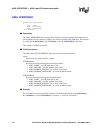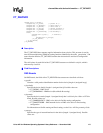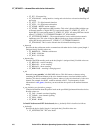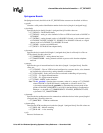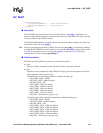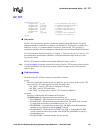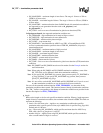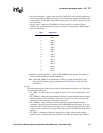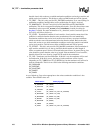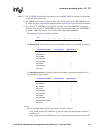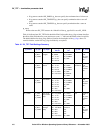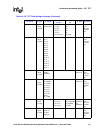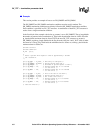
Voice API for Windows Operating Systems Library Reference — November 2003 485
termination parameter table — DV_TPT
DV_TPT
termination parameter table
typedef struct DV_TPT {
unsigned short tp_type; /* Flags describing this entry */
unsigned short tp_termno; /* Termination Parameter number */
unsigned short tp_length; /* Length of terminator */
unsigned short tp_flags; /* Parameter attribute flag */
unsigned short tp_data; /* Optional additional data */
unsigned short rfu; /* Reserved */
DV_TPT *tp_nextp; /* Pointer to next termination
* parameter if IO_LINK set */
}DV_TPT;
!
!!
! Description
The DV_TPT data structure specifies a termination condition for an I/O function. To specify
multiple termination conditions for a function, use multiple DV_TPT structures configured as a
linked list, an array, or a combined linked list and array, with each DV_TPT specifying a
termination condition. The first termination condition that is met will terminate the I/O function.
For a list of functions in the I/O category, see Chapter 1, “Function Summary by Category”. For
more information on termination conditions, see the I/O terminations topic in the Voice API
Programming Guide.
The DV_TPT structure is defined in the Standard Runtime Library (srllib.h).
Note: Use the dx_clrtpt( ) function to clear the field values of the DV_TPT structure before using this
structure in a function call. This action prevents possible corruption of data in the allocated
memory space.
!
!!
! Field Descriptions
The fields of the DV_TPT data structure are described as follows:
tp_type
Describes whether the structure is part of a linked list, part of an array, or the last DV_TPT
entry in the DV_TPT table. Specify one of the following values:
• IO_CONT – next DV_TPT entry is contiguous in an array
• IO_EOT – last DV_TPT in the chain
• IO_LINK – tp_nextp points to next DV_TPT structure in linked list
tp_termno
Specifies a condition that will terminate an I/O function.
On DM3 boards, the supported termination conditions are:
• DX_DIGMASK – digit termination for a bit mask of digits received
• DX_DIGTYPE – digit termination for user-defined tone. The ASCII value set in the
tp_length field must match a real DTMF tone (0-9, a-d, *, #).
• DX_IDDTIME – maximum delay between digits. On DM3 boards, this termination
condition is only supported by the dx_getdig( ) function.
• DX_MAXDATA – maximum data for ADSI 2-way FSK. A Transmit/Receive FSK
session is terminated when the specified value of FSK DX_MAXDATA (in bytes) is
transmitted/received.
• DX_MAXDTMF – maximum number of digits received




